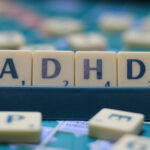Attention-Deficit/Hyperactivity Disorder (ADHD) is one of the most common childhood disorders and can persist into adulthood. This diagnosis is made up of difficulties with attention, focus, controlling behaviors, and overactivity. According to the National Institute of Mental Health (NIMH), survey data shows an overall prevalence of adult ADHD at 4.4% of the national population, and an estimated lifetime prevalence at 8.1% among adults between ages 18-44. The rate of this diagnosis among adults continues to be on the rise, and yet researchers suggest that it continues to be underdiagnosed.
Regarding symptoms among adults with ADHD, they can experience several areas of struggle, and particularly when untreated, quality of life can be negatively affected. For instance, adult ADHD can lead to greater difficulties attaining and maintaining jobs, and can cause more problems within interpersonal relationships of any kind. Adults diagnosed with ADHD also tend be overly focused on the present in that they struggle to learn from the past, or consider future consequences due to acting without thinking. In turn, this pattern of impulsivity can hinder the ability to plan ahead and learn from experiences regardless of their intelligence and insight. Other relevant symptoms may include sensitivity to distractions, feeling emotionally intense, and becoming easily bored. ADHD is also known to be associated with positive attributes, including strong determination, likeability, creativity, and a good sense of humor.
While researchers and mental health professionals have a good understanding about the symptoms of ADHD, the cause, or etiology, of this diagnosis are less well-known among the general public. As a neurodevelopmental condition, ADHD is made up of traits, symptoms, and behaviors that result from the brain developing differently during important neuro-developmental stages. Thus, ADHD has been included in the larger category of neurodiversity, or neurological differences in brain structure and development. In order to understand how an adult with ADHD thinks, it is important to understand their nervous system and neurological functioning.
From a neurological perspective, people with ADHD have a desire to be engaged and challenged, and tend to be continuously occupied with more intense experiences, thoughts and senses. This means their nervous system can become overwhelmed by stimuli because it is constantly on high intensity. Additionally, an ADHD brain functions on the more extremes of the spectrum in that, it can either be extremely focused on a task when interested, or it cannot sustain sufficient focus on tasks that are more mundane or boring to the person. In contrast to a neurotypical person, people with ADHD struggle to plan and execute tasks in order, so traditional ways of organization with a beginning, middle, and end are much more difficult because they do not take a linear approach in their thinking. In turn, when attempting to retrieve information in their brains, people with ADHD do not have a reliable way to access these memories because there are so many other thoughts taking up their working memory. Further, an ADHD mind often does not have a reliable sense of time because it lives in the present
and cannot always prioritize things accordingly. Therefore, while there are many individuals with ADHD that adapt, cope, and very successfully manage their lives, they are more likely to function and fulfill responsibilities using different approaches to accommodate the neurological differences in their brains.
